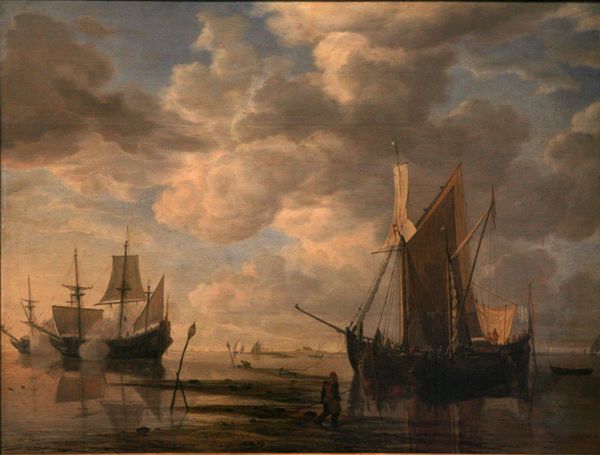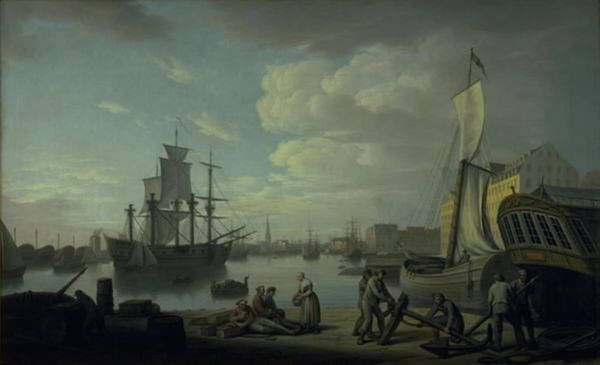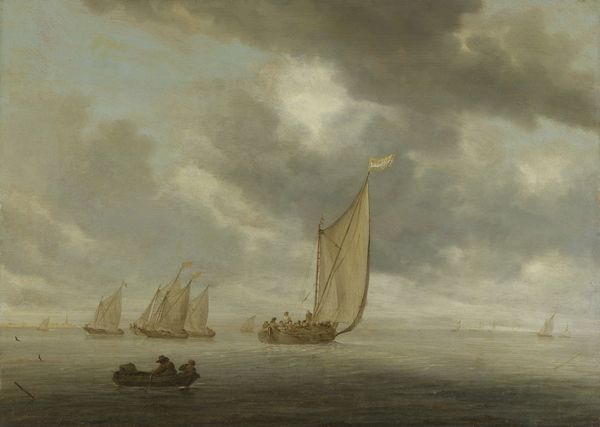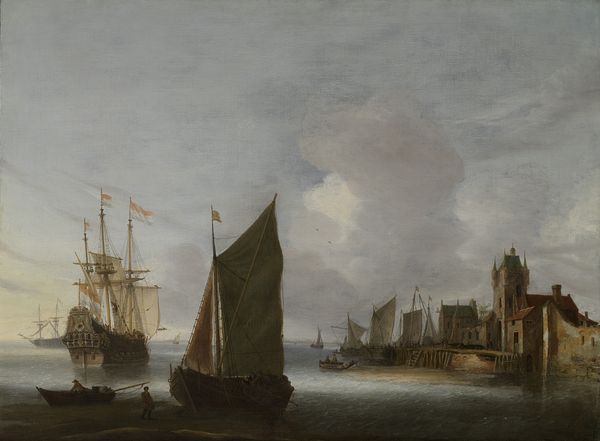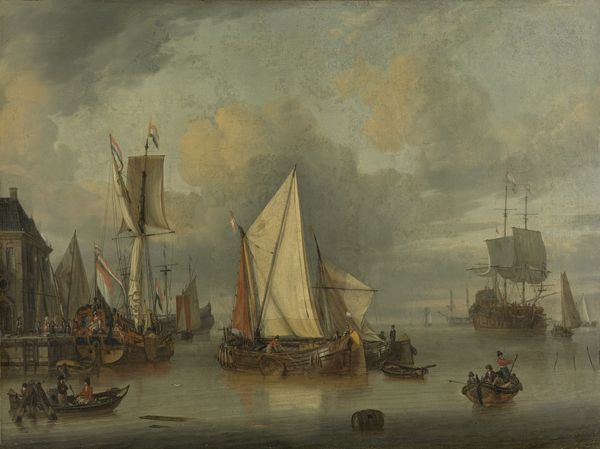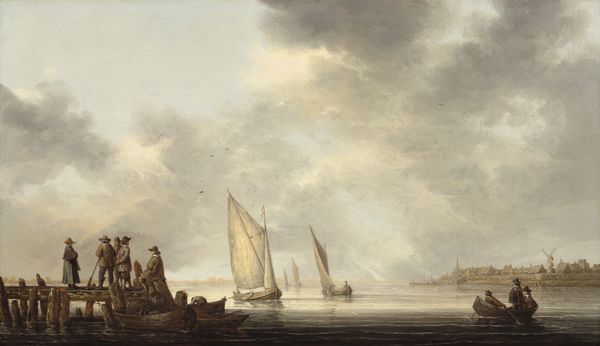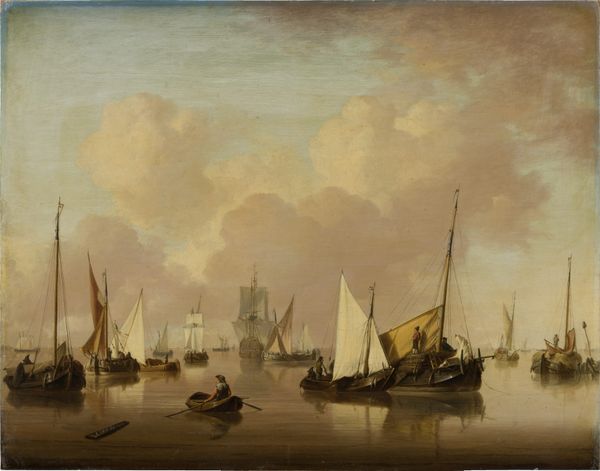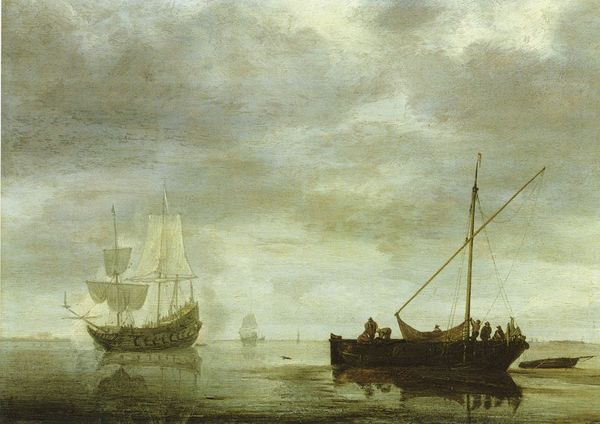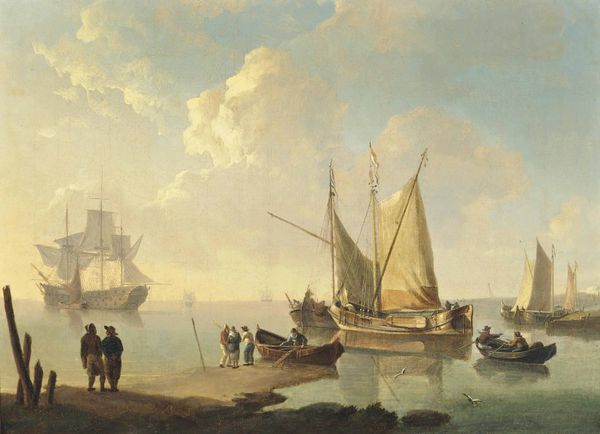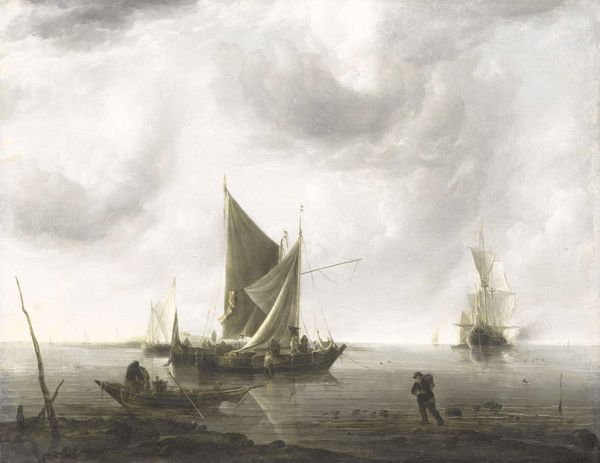
oil-paint
#
water colours
#
dutch-golden-age
#
oil-paint
#
landscape
#
cityscape
#
realism
Dimensions: 58 cm (height) x 66.5 cm (width) (Netto)
Curator: Here we have Hendrick Jacobsz. Dubbels' "View of a Dutch Roadstead," painted sometime between 1650 and 1655. It's currently held in the collection of the SMK, Statens Museum for Kunst. Editor: It strikes me as quite somber. That subdued palette, the muted tones...it gives you a real sense of a specific time and place, doesn’t it? The oil paint practically seems to mimic the North Sea mist. Curator: Indeed. The Dutch Golden Age was a period of tremendous mercantile expansion, and maritime scenes like this became increasingly popular, reflecting national pride and economic power. Look how Dubbels renders the ships. Not just objects, but testaments to Dutch innovation and trade. Editor: And the labor! I’m curious about the pigments he used. That gray isn't just grey; it's layered, mixed. It’s built from a variety of hues, a conscious, painstaking process to convey that atmosphere. Consider the work involved in hauling the raw materials needed to manufacture the pigments that created this painting, not just Dubbels, but a whole workshop maybe? Curator: That's an interesting point, especially when thinking about how artistic production at the time was organized around workshops, not individual genius. Also, this sort of imagery supported a strong sense of Dutch identity; maritime trade was certainly part of this national mythology. These paintings played a public role in promoting Dutch prestige, showing Dutch seafaring expertise but overlooking the backbreaking labor of ordinary seamen. Editor: True. There’s also an undercurrent of transience in that sky, the fleeting weather. Oil paints allow capturing that almost instantaneous feel, freezing a specific moment. And I appreciate Dubbels choosing to feature commoners as well as impressive ships, perhaps even a genre-like element, as these subjects suggest common occupations of the people, maybe even fishing or salvaging activities on the coast. Curator: It's fascinating how he manages to create this vast, slightly melancholic landscape, with those ordinary, working people as a central aspect of the painting's theme. We are perhaps experiencing a snapshot into Dutch social strata during the Golden age. Editor: The layering, the building up of paint, the subtle textures, it speaks of materiality and labor in ways history books often don't. It offers us access to a felt sense of what it was like to live and work within this Dutch coastal environment, I imagine, while also reflecting national ideals of trade and wealth.
Comments
No comments
Be the first to comment and join the conversation on the ultimate creative platform.
